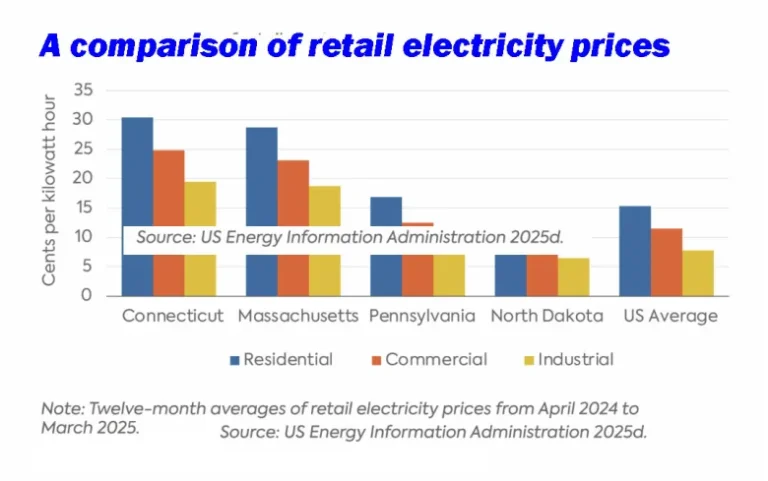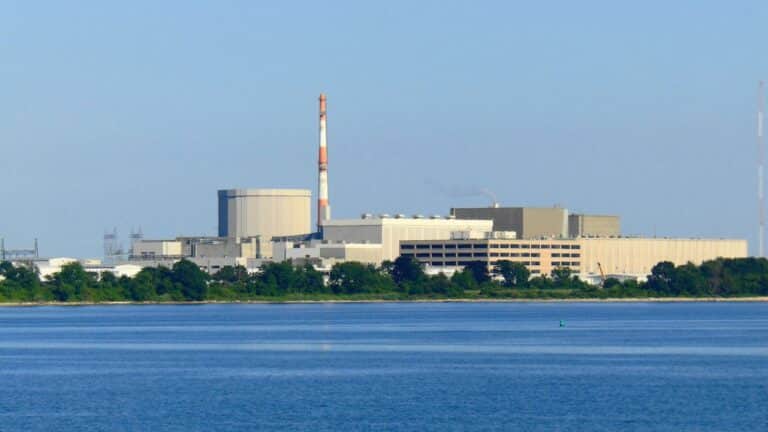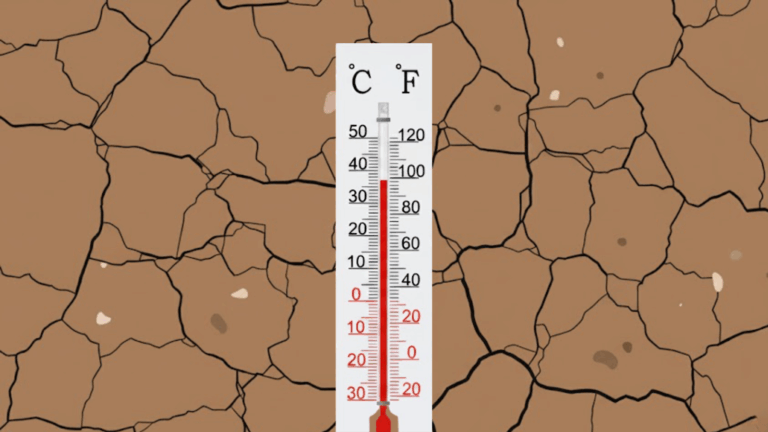This website uses cookies as well as similar tools and technologies to understand visitors’ experiences. By continuing to use this website, you consent to Columbia University’s usage of cookies and similar technologies, in accordance with the Columbia University Website Cookie Notice.
A Carbon Tax Under Real-World Constraints
Commentary by Noah Kaufman • October 12, 2018
Summary
Initiative 1631 proposes putting a price on carbon dioxide emissions in Washington State. Some critics of Initiative 1631 say that while a carbon tax is a good policy, the initiative’s design is flawed. This commentary evaluates such claims by highlighting various concerns with the design of Initiative 1631 and comparing the ballot initiative’s details with economists’ best practices for the design of carbon tax policies. In each case, policy designers confronted difficult decisions involving political and legal barriers to a carbon tax:
The exemption of energy intensive and trade-exposed (EITE) industries. Economists recommend imposing a carbon tax on companies in EITE industries and compensating them in a way that retains their incentive to reduce emissions. However, compensating EITE companies may have jeopardized Initiative 1631’s status as a carbon “fee” instead of a “tax,” and it would have been difficult to avoid overcompensating certain industries. Policy designers had to balance those risks with the benefits of covering the EITE industries, which account for about five percent of statewide emissions.
- The exemption of coal plants retiring by 2025. In 2011, owners of the last coal plant in Washington agreed to shut their plant by 2025 and provide financial support to their workers and community through the transition; in exchange, the state government committed to implementing no further emissions regulations on the plant. By upholding this agreement, Initiative 1631 avoids legal risks but sacrifices cost-effective emissions reductions and may create perverse incentives that causes coal use to increase in the early 2020s.
Using revenue to fund investments in clean energy and environmental protection. It is too early to draw conclusions about Initiative 1631’s revenue use because the policy leaves specific spending decisions to a public oversight board. Clean energy spending could fund programs that complement a carbon tax and enable the policy to achieve additional low- cost emissions reductions, or it could fund inefficient programs that achieve few emissions reductions. Funding clean energy and environmental protection reflects the priorities of the policy designers and may be more popular among Washington voters than the revenue-neutral carbon tax that failed on the ballot in 2016.
Limited preemption of regulations. Economists recommend eliminating regulations that can hinder the ability of a carbon tax to achieve cost-effective emissions reductions. Initiative 1631 heeds this advice by blocking the enforcement of the state’s Clean Air Rule. Critics say Initiative 1631 should have gone further and removed the authority for the state to implement overlapping regulations in the future. Such action could have increased regulatory certainty for industry, but it may have been unpopular, and it may have removed a tool that policymakers could use to achieve further emissions reductions in the future.
As the failures of previous carbon tax proposals in Washington State illustrate, policy design matters little for policies that are never implemented. The design of Initiative 1631 reflects decisions intended to secure the passage and lasting implementation of the policy. It also reflects the priorities of the group that designed the policy.
Critics may have different priorities, and they may argue that Initiative 1631 makes too many sacrifices to overcome political constraints. But claims of a flawed policy design are overly simplistic and misleading.
Introduction
Carbon tax-watchers may want to turn their attention toward the northwest and that other Washington, where Initiative 1631 is on the ballot in November. If it passes, Washington will become the second US state with a near-economy-wide price on carbon dioxide emissions and the first with a carbon tax or fee, which is an approach overwhelmingly supported by economists as a cost-effective way to reduce emissions. Its success or failure could have ripple effects across other states and at the federal level.
Washington has tried, and failed, to pass a carbon tax many times before, including with a ballot initiative in 2016. Initiative 1631 appears to have a broader coalition of support, but its prospects remain highly uncertain, particularly with opponents waging a well-funded campaign against it. The opposition uses many of the same talking points that arise each time a carbon tax is proposed, which have been addressed ad nauseum elsewhere. Here, I focus exclusively on the critics – mostly fossil fuel companies – who say a carbon tax is a good idea in general but that the design of this specific policy is flawed. For example, the oil majors BP and Shell both support carbon taxes, but BP is opposing Initiative 1631 because it is a “poorly- designed policy,” and Shell is not supporting the initiative because it “was designed with some considerable imperfections.”
Specifically, I examine four concerns that carbon tax supporters have raised with the design of Initiative 1631: (1) the exemptions of trade-exposed industries, (2) the exemptions of retiring coal plants, (3) the use of revenues for clean energy investments, and (4) the lack of preemption of other regulations. For each, I highlight the consensus of economists on how a carbon tax should be designed (in theory) and compares those recommendations to the details of Initiative 1631.
Economic theory and analyses do not always translate perfectly into pragmatic policy design. In at least two cases, there are differences between Initiative 1631 and a perfectly-designed theoretical carbon tax. But the designers of Initiative 1631 did not start from a blank slate. The deviations from an optimal policy reflect reasonable attempts to overcome political and legal constraints that stand in the way of any carbon tax policy in Washington State.
Protecting the Competitiveness of In-State Industries
Unilaterally imposing a carbon tax raises concerns about the competitiveness of in- state industries compared to out-of-state companies whose products are not taxed at a comparable rate. A carbon tax could cause companies in these industries to lose market share or flee the state, risking economic harm and emissions leakage.
How can policy makers design a carbon tax to avoid these outcomes?
 Economists recommend:
Economists recommend:
Economists recommend implementing a carbon tax with the broadest possible geographic scope so that all competitors of in-state industries are also covered by the policy. When that’s not possible, policy makers can define a set of industries that are most at risk based on their energy intensity and trade exposure and implement a border carbon adjustment (BCA) that requires importers of these products to pay a fee and provides rebates to exporters of the same products.
Alternatively, and perhaps more relevant to Washington State, policy makers can compensate the producers of these energy-intensive and trade-exposed (EITE) products in a way that retains the incentive for these industries to reduce emissions. Under a cap- and-trade program, this can be done in a straightforward way by awarding free emissions permits to EITE companies. A carbon tax requires a different approach: economists have proposed subsidizing these products with a tax credit of an amount equal to the expected carbon tax payments for a representative company in each EITE industry. Then, if these companies can reduce their emissions, they will receive the same subsidy but pay less in taxes.
Subsidizing high-carbon products is a highly imperfect solution that adds complications to a carbon tax and risks overcompensating certain industries, as the 2016 ballot initiative was criticized for doing, but economists generally prefer this solution to excluding EITE industries altogether.
Does Initiative 1631 deviate from a theoretically optimal policy?
Yes. Initiative 1631 exempts roughly 20 industries that have been previously defined by the state as EITE. The list of industries flagged for protection includes pulp and paper mills, glass, iron, aluminum, and cement, among others, but it does not include refineries. Exempting these emissions sources altogether instead of taxing them and implementing one of the alternatives described above means these companies have no incentive to reduce their emissions under Initiative 1631, thus reducing the environmental effectiveness of the policy.
 Constraints that influenced the decision
Constraints that influenced the decision
Some of the potential solutions are nonstarters. For example, Washington legislators cannot implement a carbon tax that extends beyond the state’s borders; the US Constitution may not allow a state to implement a BCA because it could be seen as a protectionist policy that violates the Dormant Commerce Clause (although some experts say states can implement a BCA); and Initiative 1631 is not a cap-and-trade program, so EITE companies cannot be compensated using emissions permits, which is what California has done.
Initiative 1631 is also not technically a carbon tax—it is a carbon fee, which is a distinction with a substantive difference. The policy was designed as a fee instead of a tax to make the initiative more appealing to voters and to reduce the ability of the legislature the divert the revenues for other purposes in the future. Under state law, the revenue from a fee must be used for the program being funded. For Initiative 1631, that means all revenue must be used for “reducing pollution by investing in clean air, clean energy, clean water, [and] healthy forests,” and revenue cannot be used for tax rebates or tax reform, which was the approach taken in the previous carbon tax ballot initiative that failed in Washington in 2016.
Policy designers could perhaps have found a creative way around these restrictions or chosen to structure the policy as a tax instead of a fee. But consider the scope of this issue in the context of the policy: the exempted EITE industries account for roughly 5 percent of emissions. Policy designers chose the simplicity and political advantages of exempting EITE industries over the small additional emissions reductions that covering these industries would have achieved.
Upholding an Agreement with a Retiring Coal Plant
For a typical carbon tax, there are few easier decisions for policy designers than to impose the tax on coal plants. Recent modeling by the Rhodium Group shows that at the federal level, the shift away from coal is the largest source of emissions reductions from a carbon tax by a wide margin.
 Economists recommend:
Economists recommend:
Economists recommend imposing the carbon tax on coal plants.
 Does Initiative 1631 deviate from a theoretically optimal policy?
Does Initiative 1631 deviate from a theoretically optimal policy?
Yes. Initiative 1631 exempts coal plants that are legally required to shut down by 2025. This exemption will not only hinder cost-effective emissions reductions from coal plants but could also create perverse incentives whereby the policy causes a shift from natural gas (which will be subject to the carbon fee) to coal electricity production (which will not be), thus increasing emissions in certain places.
 Constraints that influenced the decision:
Constraints that influenced the decision:
Washington has one coal power plant. In 2011, owners of this plant agreed to shut down one of its two boilers by 2020 (the year Initiative 1631 would be implemented) and the other by 2025. As part of this agreement, owners of the plant were promised regulatory certainty (i.e., no additional GHG regulations), and the workers and surrounding communities were promised the gradual phaseout of the plant and financial support.
In addition, because exempting only an in-state coal plant might run afoul of the US Constitution’s Dormant Commerce Clause, Initiative 1631 exempts any coal plants that are retiring by 2025, including a large plant in Montana that provides electricity to Washington.
A ballot initiative could perhaps have overridden the agreement with the coal plant, as the failed 2016 carbon tax ballot initiative was attempting to do. However, like the EITE exemptions, there’s more to the story. While the United States generates 30 percent of its electricity from coal, in Washington, coal has contributed just 2 percent of its total electricity production so far in 2018, down from 5 percent last year. In-state coal generation will shrink further in 2020 and disappear by 2025 as the last coal plant closes. Emissions from out-of-state coal plants may be two or three times larger than from in- state plants, but some of this out-of-state coal will not be exempt from the fee, and some will close by 2020 or soon after.
Initiative 1631 is designed to uphold the state’s promise, thus avoiding legal risks of breaking it, at the cost of failing to cover a temporary source of emissions.
Spending Carbon Tax Revenue on Clean Energy and Other Environmental Concerns
Initiative 1631 will create new revenues on order of $1 billion per year. How to allocate revenue is an important and controversial decision for any carbon tax policy.
 Economists recommend:
Economists recommend:
Economists recommend that carbon tax revenue be used in productive ways. If this sounds like a vague prescription, it is because economic models are limited in their ability to analyze the “optimal” use of carbon tax revenue. Economic analyses of carbon taxes show that using revenues to reduce taxes is a better way to boost economic growth than using revenues for equal rebates, while rebates are a better way to create a progressive policy. But these analyses do not offer guidance for policy makers on how to balance multiple objectives like economic growth, fairness, and environmental protection.
Most important for Washington’s Initiative 1631, few economic studies have analyzed the use of carbon tax revenue for targeted government investments, which severely limits economists’ ability compare this option to other policy alternatives.
Does Initiative 1631 deviate from a theoretically optimal policy?
Unclear. The revenue from Initiative 1631 must be spent according to the following general parameters:
- 70 percent to support clean air and clean energy projects, including portions directed to low-income residents and fossil fuel workers
- 25 percent to support clean water and forest resources
- 5 percent to support communities’ preparations for the consequences of climate change
Whether using revenues for these purposes deviates from a theoretically optimal policy cannot be evaluated without more detail on the specific programs that will be funded. Initiative 1631 leaves the decision on exactly how to spend the revenue to a public oversight board appointed by the governor.
The oversight board could spend the revenue in ways that complement a carbon tax by addressing separate (non-price-related) market barriers. This could include spending aimed at environmental protection, climate change adaptation or reducing emissions from sources that are not covered by the carbon fee. It could also include programs that support public infrastructure, that help emerging technologies reach commercialization, or other areas where a fee alone is insufficient to move the market fast enough or at the necessary scale. These types of government investments could increase the emissions reductions achieved by the carbon fee, and economists have little to say about whether such revenue uses are better or worse than an alternative revenue use like tax cuts.
In contrast, if the public oversight board spends the revenue on projects that would have occurred anyway due to the carbon fee, this would be a clear deviation from a theoretically optimal policy. In addition, if revenues are used to achieve emissions reductions that are simply too expensive to be incentivized by the carbon fee, economists would recommend implementing a policy with a higher carbon fee instead.
Constraints that influenced the decision:
Funding clean energy and environmental protection reflects the priorities of the policy designers. In addition, both legal and political constraints contributed to the decision to use revenues in these ways. As mentioned earlier, earning the label of a “fee” required using all the revenue to accomplish the policy’s objective of “reducing pollution by investing in clean air, clean energy, clean water, [and] healthy forests.” The failure of the 2016 carbon tax ballot initiative can in part be attributed to dissatisfaction among voters with its proposed revenue uses, so it is possible that Initiative 1631’s use of revenue is the best way to pass a carbon tax in Washington State.
Finally, likely to avoid large energy price increases, Initiative 1631 would implement relatively low carbon fees: $15/ton in 2020 and increasing by $2/ton per year (plus inflation). Similar to most other carbon pricing policies around the world, these rates are likely far too low to achieve the state’s emissions targets. (Note that at the federal level, a carbon fee at these rates would achieve much larger emissions reductions than in Washington because the bulk of the lowest cost reductions are in the power sector, and Washington has a much lower-carbon electricity sysem than the country as a whole.) Using the revenue in ways that achieve additional emissions reductions can help to bridge that emissions gap, even if higher carbon tax rates would have been a more cost-effective approach.
Limited Preemption
Carbon tax legislation often includes other policy changes that are not directly under the umbrella of the carbon tax. This includes adding policies that complement a carbon tax, subtracting policies that are no longer needed alongside a carbon tax, and changing policies that fall in the middle of those two extremes.
Economists recommend:
Economists recommend implementing a portfolio of policies to achieve the desired emissions reductions at the lowest possible cost. That includes a price on carbon dioxide emissions, other policies to address separate emissions and market barriers, and the removal of policies that could hinder the ability of a carbon tax to achieve cost-effective emissions reductions (e.g., individually regulating facilities covered by the tax).
 Does Initiative 1631 deviate from a theoretically optimal policy?
Does Initiative 1631 deviate from a theoretically optimal policy?
No. As already discussed, the revenue from the carbon fee could fund government programs that complement a carbon tax in achieving emissions reductions.
On the other side of the ledger, Initiative 1631 blocks the enforcement of a potentially duplicative policy: Washington’s Clean Air Rule, which requires emissions reductions from large sources in the state (but is currently suspended due to a court ruling against it).
Opponents have criticized Initiative 1631 for not going further and preempting not only existing policies but also potential future regulations of CO2 emissions “that could result in a double tax on consumers and businesses.” Doing so could have provided regulatory certainty to industry and perhaps could have helped gain more support from industry. However, developing an optimal carbon tax policy does not require preempting the state’s authority to issue future regulations. If these regulations would be harmful to consumers and businesses, the state can simply not exercise its authority to implement them.
 Constraints that influenced the decision:
Constraints that influenced the decision:
If federal government inaction on climate continues, achieving Washington State’s emissions targets may require additional state- level policy action in the future. The preemption of regulatory authorities could remove tools from the toolbox that future policy makers may need to achieve further emissions reductions. In addition, preemption may have hurt the chances of passing a carbon tax in Washington, given the desire for the endorsements of environmental and liberal-leaning groups that oppose such preemptions.
Conclusion
Concerns about Initiative 1631’s use of revenue and its lack of preemption of future regulations may be grounded in sound economic principles but they do not reflect any clear deviations between Initiative 1631 and a theoretically optimal carbon tax. Future decisions could change those conclusions, if the public oversight board spends the revenues in ways that do not complement a carbon fee or if the government issues inefficient duplicative policies alongside the fee.
The exemptions of EITE industries and retiring coal plants are a different story. Economists recommend imposing a carbon tax on all such facilities, and policy designers could potentially have found ways to do so. But claims from critics that Initiative 1631 is “filled with exemptions that make no sense” are off base. EITE companies were excluded because they are a small source of emissions, and imposing economists’ typical prescriptions for EITE sectors would have added legal and political risks to the policy. Retiring coal plants were exempted because they are a temporary source of emissions, and imposing the carbon fee on the state’s coal plant would have violated a previous commitment to the owners of the plant, its workers, and the surrounding community.
Reasonable people can disagree about these decisions as well as the overall design of any carbon tax policy. And various concerns with Initiative 1631 were not covered in this commentary: the creation of the public oversight board, the support for low-income households, and the level of the fee, among others.
But I found little evidence to support claims from carbon tax supporters that Initiative 1631 is a poorly designed carbon tax. The policy design was influenced by the need to overcome a set of political and legal barriers to a carbon tax in Washington, and it emphasizes the priorities of those who designed the policy. Groups withholding support for a carbon tax until a policy comes along that perfectly matches their priorities and is devoid of compromises to overcome real-world constraints are likely to be waiting a long time.
***
The views represented in this commentary represent those of the author.
The author would like to thank Kate Gordon, Yoram Bauman, Matthew Robinson and Stephanie Damassa for their careful review and comments on earlier versions of this commentary.
This work was made possible by support from the Center on Global Energy Policy. More information is available at http://energypolicy.columbia.edu/about/mission.
Relevant
Publications
Opinion: Time for CT to rethink its climate strategy
Connecticut needs an honest debate, and fresh thinking, to shape a climate strategy fit for today, not 2022.

Climate Ambition and Electricity Affordability: Lessons from Connecticut

COP30 and Beyond: The Implications of a New Era of Discord in Global Climate Politics
As diplomats meet in Brazil for COP30, global resolve to tackle the climate challenge appears badly frayed.



